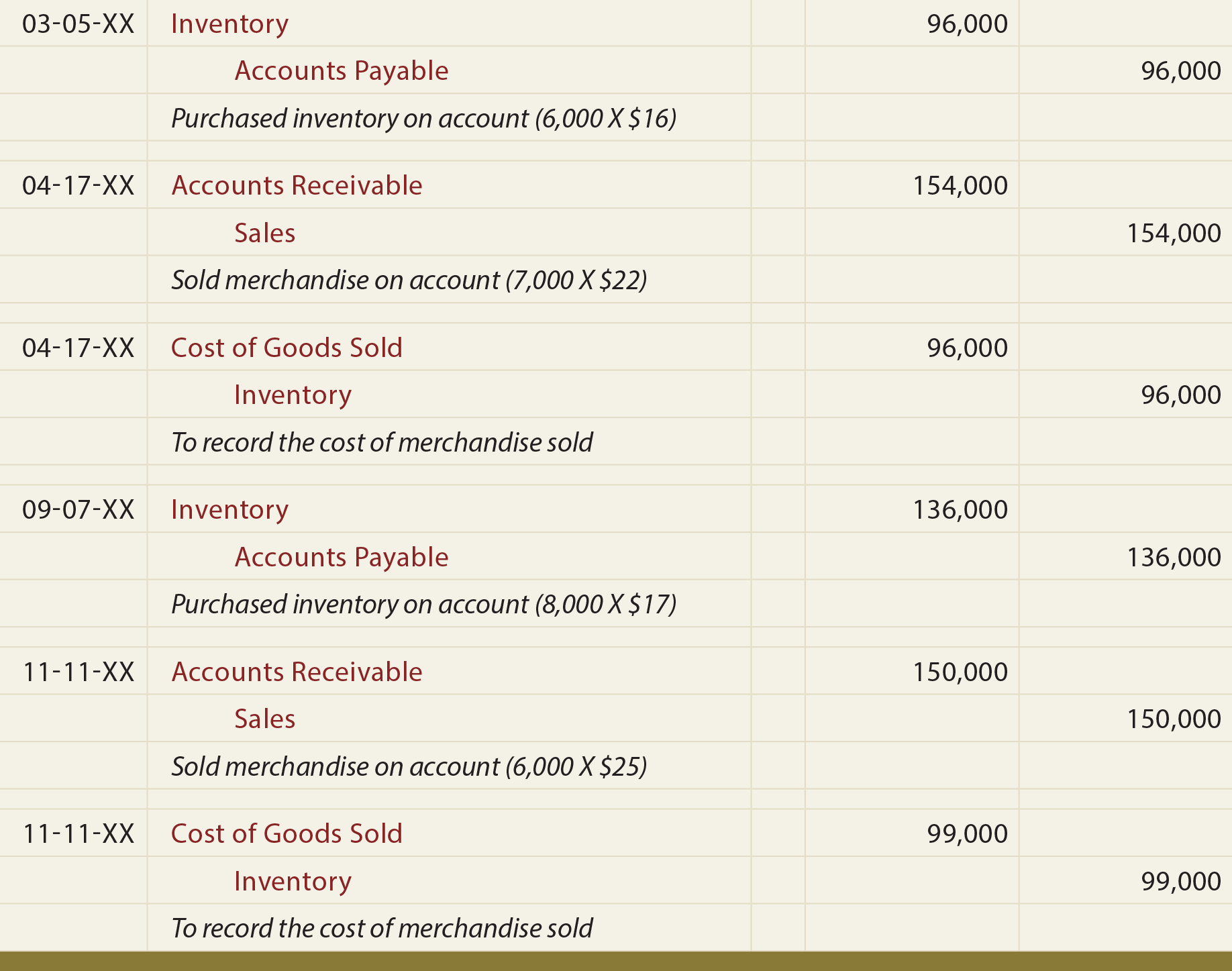10 3: Calculate the Cost of Goods Sold and Ending Inventory Using the Perpetual Method Business LibreTexts

In a periodic system, accounting does not perform this second step. Companies using perpetual inventory system prepare an inventory card to continuously track the quantity and dollar amount of inventory purchased, sold and in stock. A separate perpetual inventory card is prepared for each inventory item. This card has separate columns to record purchases, sales and balance of inventory in both units and dollars. The quantity and dollar information in these columns are updated in real time i.e., after each purchase and each sale.
FAR CPA Practice Questions: Issuing Stock, Stock Dividends, and Stock Splits
Every product is assigned a tracking code, such as a barcode or RFID code, that distinguishes it, tracks its quantity, location and any other relevant details. The following table, ledgers, and financial statements reveal the application of perpetual LIFO. The journal entries are not repeated here but would be the same as with FIFO; only the amounts would change.
FIFO Method:
- Next, the accountant adjusts the inventory account to match the cost of the ending inventory.
- Other businesses that need perpetual inventory include those that specialize in drop shipping, where the manufacturers ship directly to customers or those who specialize in trade and distribution.
- However, as we shall see in following sections, inventory is accounted for separately from purchases and sales through a single adjustment at the year end.
Let’s say that you need to estimate the ending inventory from the current month. The values you need to know to calculate this are the gross profit as a percentage of sales, the total sales for the period, the beginning inventory for the period and purchases for the period. As shown below in the ledger, estimate the relative percentages of both COGS and gross profit for your total sales. From there, solve for the cost of goods sold, and then fill in the known values minus the COGS figure. The result should provide an ending inventory estimate and how much to claim as the bottom-line figure for this period. When you sell products in a perpetual inventory system, the expense account increases and grows the costs of sales.
What Is the Periodic Inventory System?

For the past 52 years, Harold Averkamp (CPA, MBA) hasworked as an accounting supervisor, manager, consultant, university instructor, and innovator in teaching accounting online. For the past 52 years, Harold Averkamp (CPA, MBA) has worked as an accounting supervisor, manager, consultant, university instructor, and innovator in teaching accounting online. Build a growing, resilient business by clearing the unique hurdles that small companies face. Synchronize sales, marketing, customer service and technical support activities.
The key takeaway here is that when you’re calculating the cost of goods sold or ending inventory using periodic FIFO, the date on which the company sold the goods doesn’t matter. You simply assume how to calculate cost per unit that the oldest stock is sold first and apply this assumption to your calculations. Cost of goods sold can be computed by using either periodic inventory formula method or earliest cost method.
FIFO Inventory Journal Entries
Marketers can set current information in the context of historical trends to understand customer behavior and position the company to meet anticipated customer demand. Perpetual inventory methods are increasingly being used in warehouses and the retail industry. With perpetual inventory, overstatements, also called phantom inventory, and missing inventory understatements can be kept to a minimum. Perpetual inventory is also a requirement for companies that use a material requirement planning (MRP) system for production. Since under FIFO method inventory is stated at the latest purchase cost, this will result in valuation of inventory at price that is relatively close to its current market worth.
In a perpetual system, you would not calculate the WAC using a formula for a specific period. You can use WAC to calculate an average unit cost, COGS for a period and ending inventory for a period. For example, Ava wants to figure out the average cost to assign for Acetone repackaged in her company’s warehouse. She will use this information to calculate the ending inventory and COGS for the period. See the ledger below for transactions for Acetone in Jan. using a weighted average. This ledger mimics that of a software ledger in a perpetual system.
Perpetual and periodic systems require different tools and procedures around how employees document inventory, although they can be complementary. In a periodic system, employees record products only at specified intervals. A perpetual inventory system is a program that continuously estimates your inventory based on your electronic records, not a physical inventory. This system starts with the baseline from a physical count and updates based on purchases made in and shipments made out.
